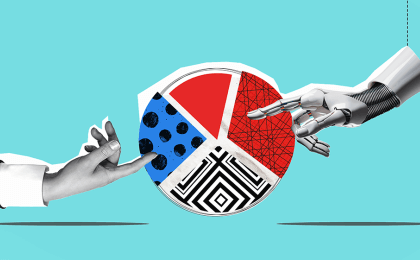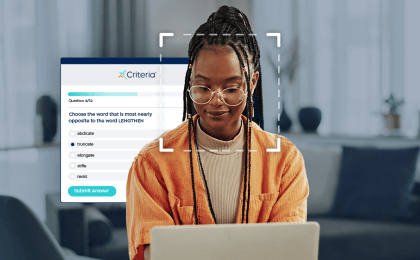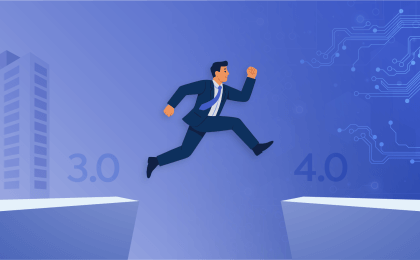(This article originally appeared on HR.com.)
The ability to identify and hire the right talent is becoming more essential all the time. Not only do companies need workforces capable of performing in a dynamic and competitive global economy, but as we approach the post-COVID era, employees will also have to be able to quickly adjusting to new circumstances – from the emergence of hybrid remote/physical workplaces to the increasing demand for soft skills like creativity and problem-solving.
With the unemployment rate still far higher than it was a year ago, companies have a much larger talent pool to draw upon. This means they should be attempting to identify reliable predictors of job performance earlier in the talent funnel. Meanwhile, as the national conversation about racial inequality and other forms of social injustice continues, it’s more important than ever for companies to minimize bias and discrimination in their hiring processes.
By providing objective indicators of everything from a candidate’s emotional intelligence to general cognitive ability, pre-employment assessments can help companies address all these issues at once. At a time when companies have access to powerful predictive analytics that can help them cut through the noise and identify the most capable candidates available, they no longer have to rely on outdated forms of evaluation like resumes and interviews. This is why we’re only going to see more companies adopt evidence-based hiring methods in the future.
Hiring Platforms Should Be as Objective as Possible
When it comes to deciding whether a candidate will be a good fit for a company, subjective impressions of human beings have never been particularly reliable. Interviewers, like all humans, are susceptible to biases, prejudices, and other cognitive distortions that prevent them from making decisions that are objective and grounded in reality. This doesn’t just reinforce systemic inequalities in our society – it also prevents companies from hiring the best candidates available.
The problems with traditional hiring methods are manifest: a study published in Administrative Science Quarterly found that members of marginalized groups who hide their race on their resumes receive more interviews. A recent survey conducted by ResumeLab found that more than one-third of respondents admit to lying on a resume, while 93 percent say they know someone who has lied. The survey also found that men lie on their resumes significantly more frequently than women, reinforcing existing disparities between men and women in the workplace.
These are all reasons why it’s no surprise that an American Psychological Association (APA) analysis of 17 studies of applicant evaluations found that even a simple hiring algorithm outperforms human decisions by at least 25 percent. None of this is to say pre-employment assessments can or should replace interviews and resumes entirely, but it’s clear that companies have plenty of reasons to make their hiring practices more data-driven.
What Pre-Employment Assessments Can Tell Us
When hiring managers consider applicants for a job, they want to know more than what a resume or an interview can reveal. According to a recent report by the World Economic Forum (WEF), there’s an ever-widening range of skills and aptitudes that employees need in a rapidly evolving global economy – from cognitive abilities like critical thinking, ideation, creativity, and innovation to interpersonal skills like emotional intelligence.
There are many assessments hiring managers can use to determine how a candidate is likely to perform across an array of performance measures. To take just one example: there’s a firm connection between general cognitive ability and job performance, and companies can administer cognitive aptitude tests that demonstrate whether employees are capable of problem-solving, learning, and critical thinking. Candidates can also take tests that measure specific skills, personality traits (such as their level of extroversion), and emotional intelligence.
The key to an effective pre-employment assessment is its predictive validity. Unlike resumes or cover letters, assessments are designed to go beyond the information candidates provide about themselves and determine how they’re actually likely to perform in their new roles (or in other roles they may have to fill). We already have a wealth of information about which characteristics will likely make a candidate high-performing (such as cognitive ability and emotional intelligence), so the central task is determining who actually possesses those characteristics and to what extent.
Making the Most of Pre-Employment Assessments
Companies no longer have to rely on antiquated forms of evaluation – such as a glance at a resume and a conversation that often only lasts a few minutes – to make crucial decisions about the makeup of their workforces. However, this doesn’t mean pre-employment assessments are infallible, nor does it mean companies should do away with traditional hiring methods altogether.
Two years ago, Amazon abandoned an AI-powered recruiting tool that was biased against female candidates – a reminder that hiring algorithms can make mistakes just like their human counterparts. This is why companies should avoid HR technology providers that rely on “black box” algorithms (which produce decisions that aren’t intelligible to human beings) or refuse to explain how their assessments work and what they measure.
Companies that use reliable and transparent pre-employment assessments often do so in concert with more rigorous forms of traditional hirings, such as structured interviews (in which candidates are asked a consistent set of questions). This holistic approach to hiring allows companies to consider candidates across many different metrics and weight the variables that matter most to them. Hiring managers just need to make sure they’re using these processes consistently across candidates, which is the only way to ensure that they’ve established a fair playing field.
No matter what balance of traditional and data-driven hiring strategies companies strike, it’s clear that pre-employment assessments are only going to become more important. The companies that know how to determine what candidates are actually capable of will be the ones that build workforces fit for the post-Covid era and beyond.





